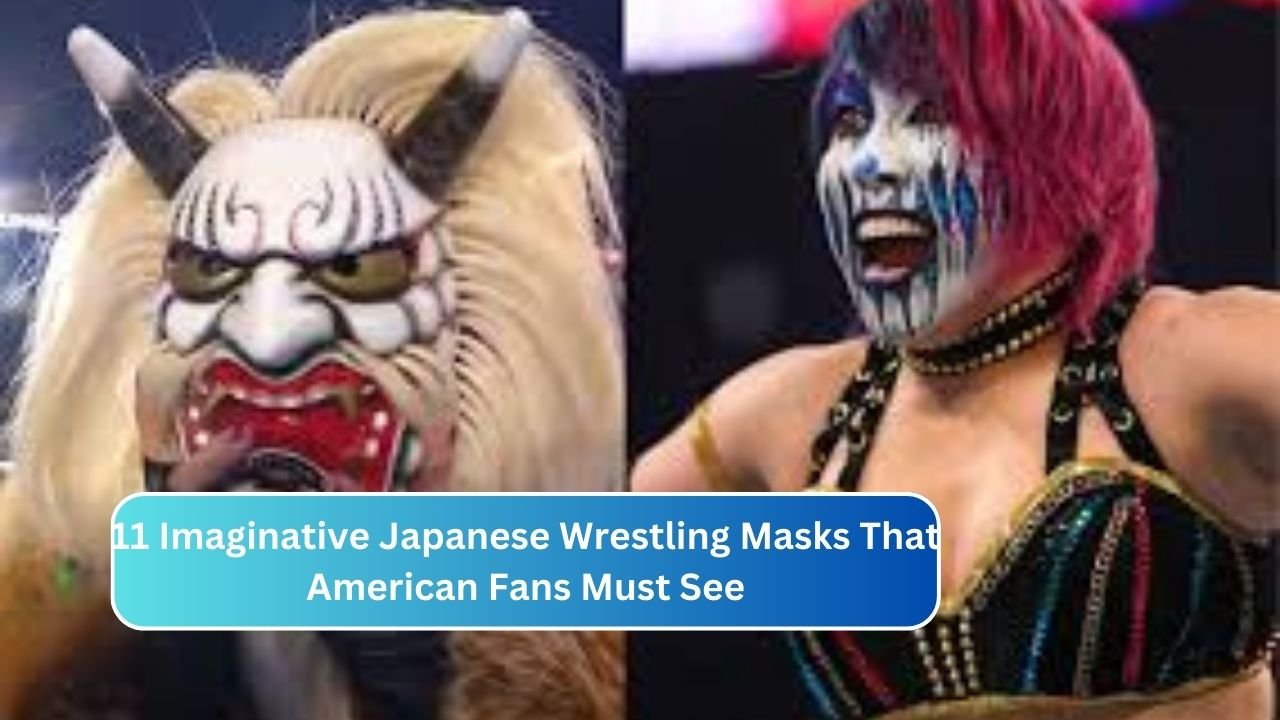Japanese wrestling masks, or Luchador masks, hold a special place in the world of professional wrestling. They are not just accessories but symbols of identity, tradition, and artistry. For American fans, these masks offer a unique glimpse into a rich cultural tapestry that blends history, mythology, and modern entertainment. In this article, we’ll explore 11 imaginative Japanese wrestling masks that capture the essence of Japanese culture and provide a visual feast for wrestling aficionados.
The Influence of Lucha Libre
Japanese wrestling, or Puroresu, has a deep connection with Mexican Lucha Libre. The vibrant designs and intricate details of Lucha Libre masks have significantly influenced Japanese mask-making. This cultural exchange has led to a fusion of styles, resulting in some of the most striking and imaginative masks seen in wrestling today.
1. Kamen Mask
The Kamen Mask is a marvel of Japanese craftsmanship. Featuring bold patterns and vivid colors, this mask draws inspiration from traditional Japanese armor. The term Kamen translates to “mask” in Japanese, and its design reflects a blend of ancient warrior aesthetics and contemporary flair. These masks are often used to convey a character’s strength and valor, making them a staple in the wrestling ring.
2. Tengu Mask
The Tengu Mask is inspired by the mythical creatures known as Tengu from Japanese folklore. These beings are often depicted with red faces and long noses, embodying both fearsome and protective qualities. The mask’s design features exaggerated facial features and intricate details that capture the essence of these mythical entities. Wrestlers donning Tengu masks often portray powerful and mysterious characters.
3. Oni Mask
Oni masks are based on demons from Japanese folklore. The Oni Mask is characterized by its fearsome appearance, including sharp horns, fierce eyes, and menacing expressions. These masks are used to evoke a sense of dread and awe, often representing antagonistic characters in the wrestling world. The Oni Mask connects deeply with traditional Japanese stories of supernatural beings.
4. Kabuki Mask
The Kabuki Mask pays homage to the classic Japanese performing art of Kabuki theater. With its elaborate designs and dramatic colors, this mask mirrors the exaggerated facial expressions used in Kabuki performances. It symbolizes the theatrical and dramatic aspects of wrestling, adding an extra layer of performance to the sport.
5. Koi Mask
Inspired by the elegant Koi fish, the Koi Mask features vibrant colors and flowing patterns that mimic the fish’s scales. Koi are symbols of perseverance and strength in Japanese culture, and this mask represents these qualities in the wrestling arena. The flowing lines and detailed artwork make the Koi Mask a visually stunning choice.
6. Sumo Mask
The Sumo Mask celebrates Japan’s traditional sumo wrestling. Featuring elements reminiscent of sumo wrestlers’ attire, such as mawashi (sumo belts) and elaborate hairstyles, this mask connects the world of professional wrestling with its traditional roots. It represents strength, discipline, and respect for the sport’s history.
7. Samurai Mask
The Samurai Mask is a tribute to Japan’s iconic samurai warriors. With its intricate designs and robust features, it captures the essence of samurai armor and the warrior spirit. The mask often includes elements like the kabuto (helmet) and menpo (face mask), symbolizing honor and bravery.
8. Geisha Mask
The Geisha Mask is inspired by the traditional attire of Japanese geishas. It features delicate designs and soft colors, reflecting the grace and elegance associated with geisha culture. This mask adds a touch of refinement and sophistication to the wrestling persona, contrasting with the more aggressive designs.
9. Dragon Mask
Dragons are revered in Japanese culture as symbols of power and wisdom. The Dragon Mask features intricate dragon motifs, including scales, claws, and fierce expressions. This mask is often used to convey a sense of majesty and strength, embodying the mythical qualities of dragons.
10. Hannya Mask
The Hannya Mask represents a female demon from Japanese Noh theater, known for its angry and vengeful expressions. The mask’s design includes sharp horns, fierce eyes, and a menacing smile, capturing the essence of the Hannya spirit. It’s used in wrestling to portray characters with complex and intense personalities.
11. Shogun Mask
The Shogun Mask is inspired by the military leaders of feudal Japan. Featuring ornate designs and symbolic elements of the shogunate, this mask represents leadership and authority. It’s often used by wrestlers who embody the traits of a commanding and strategic figure.
Conclusion
Japanese wrestling masks are not just costumes; they are a window into Japan’s rich cultural heritage. Each mask tells a story, whether it’s about mythical creatures, traditional art forms, or historical figures. For American fans, these masks offer an exciting glimpse into a unique aspect of Japanese culture and add an extra layer of excitement to the world of wrestling. Exploring these imaginative designs provides a deeper appreciation of the artistry and tradition that define Japanese wrestling.
FAQs
What is the significance of Japanese wrestling masks?
Japanese wrestling masks represent cultural and historical symbols, adding depth and character to wrestlers’ personas.
How do Japanese wrestling masks differ from Lucha Libre masks?
While both are influenced by traditional masks, Japanese wrestling masks often draw from Japanese folklore and history, whereas Lucha Libre masks have roots in Mexican traditions.
Can you buy these masks outside of Japan?
Yes, many Japanese wrestling masks are available through online retailers and specialty stores that cater to wrestling fans globally.
Are there any famous wrestlers associated with these masks?
Yes, wrestlers like Jushin Liger and Ultimo Dragon have made iconic use of such masks in their careers.
What are the most common materials used in Japanese wrestling masks?
Common materials include latex, fabric, and leather, often combined with intricate embroidery and decorative elements.










